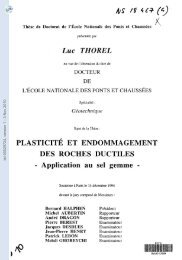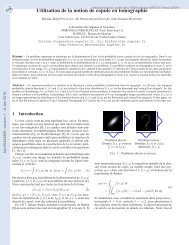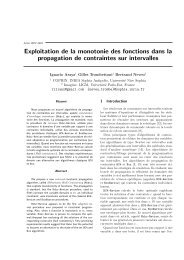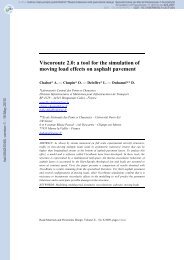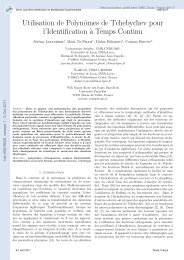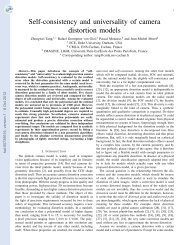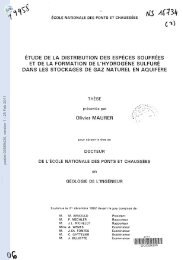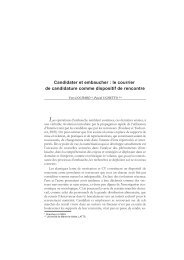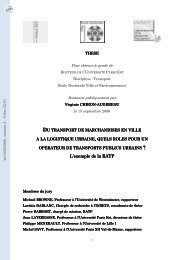MULTIVARIATE POLYNOMIALS IN SAGE
MULTIVARIATE POLYNOMIALS IN SAGE
MULTIVARIATE POLYNOMIALS IN SAGE
Create successful ePaper yourself
Turn your PDF publications into a flip-book with our unique Google optimized e-Paper software.
MULTIVARIABLE <strong>POLYNOMIALS</strong> <strong>IN</strong> <strong>SAGE</strong> 11<br />
The abstract ring of multivariate polynomials on x over Fraction<br />
Field of Multivariate Polynomial Ring in t1, t2, q over<br />
Rational Field<br />
sage : Mac = A. macdonald _ basis _on_ vectors ()<br />
sage : pol = Mac [1 ,2]; pol<br />
M(1 , 2)<br />
sage : pol . expand ()<br />
t 2^3* x(0 , 0) + t 2^2/ q*x(1 , 0) + ((t2*q+t2)/q ^2) *x(1 , 1) + 1/q^2*<br />
x(1 , 2) + ((t 2^2* q+t 2^2) /q)*x(0 , 1) + t2/q*x(0 , 2)<br />
sage : m = A. monomial _ basis ()<br />
sage : Mac ( m [1 ,1] )<br />
(-t1*t2)*M(0 , 0) + M(1 , 0) + q*M(1 , 1) + ((t1*t2*q^2+ t 2^2*q-t1*t<br />
2-t 2^2) /( -t1*q-t2))*M(0 , 1)<br />
hal-00824143, version 1 - 21 May 2013<br />
3.5. Define a new basis. All our bases are defined with divided differences acting<br />
recursively on sums of monomials. If one needs to work with a new basis where objects<br />
are indexed by vectors, the only thing to be implemented is the rule converting one<br />
vector to a sum of monomials. The inverse conversion is automatically done if the basis<br />
is triangular. One can define one’s own conversion function and so create a new basis.<br />
Below is an example to recreate the Schubert polynomials.<br />
sage : def schubert _on_ basis (v, basis , call _ back ):<br />
... for i in xrange ( len (v) -1):<br />
... if(v[i]



